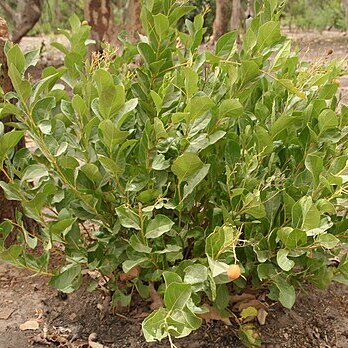Trees, shrubs, or lianas, occasionally with tendrils. Leaves alternate, rarely opposite, estipulate, veins mostly pinnate, sometimes palmate, margin usually entire, rarely lobed or denticulate. Inflorescences spikes, racemes, panicles, or cymes, axillary or terminal, rarely opposite leaves, with small bracts or not. Flowers regular, bisexual, sometimes polygamous or unisexual, (3 or)4-or 5(or 6)-merous. Calyx generally articulate to pedicel, usually persistent, small; lobes imbricate, rarely valvate. Petals present, rarely absent, free or connate at base, imbricate, rarely valvate, apices mostly inflexed or incurved. Stamens as many as petals; filaments free or on corolla tube, alternate with corolla lobes, often pilose at apex; anthers 2-celled, introrse. Disk rarely developed, cupular or divided. Ovary superior, 2-carpellate, coherent, 1-loculed, rarely 3-5-loculed; ovules 2, rarely 1 per locule, pendulous from apex, anatropous with abaxial raphe and micropyle facing upward; funicle usually thickened above micropyle; style rarely developed, simple; stigmas 2(or 3-5), or coherent to capitate or peltate. Fruit 1-loculed, 1-seeded, rarely 2-seeded, usually a drupe, rarely samaroid. Seeds pendulous, with a thin testa; endosperm usually present, embryo small, straight or curved; cotyledons usually ovate.
Trees, shrubs or climbers. Leaves mostly alternate, sometimes opposite, coriaceous, glabrous to densely pilose, exstipulate. Inflorescence terminal, axillary or supraxillary; flowers bisexual (hermaphrodite), sometimes unisexual by abortion, regular, usually paniculate. Calyx small, 4–5-lobed, usually imbricate, rarely valvate, sometimes absent. Petals 4–5, free or united, valvate. Stamens equal in number to and alternate with petals; anthers dithecous (rarely 4-lobed), with longitudinal dehiscence; filaments often tomentose, free or adnate to petals (e.g. in Leptaulus). Disk rarely present. Ovary unilocular, rarely 3–5-locular (locules lost by suppression or compression), superior; ovules usually 2, pendulous, anatropous; style simple and straight or absent; stigmas (rarely 2–)3–5-lobed, often small. Fruit a drupe, unilocular, 1-seeded; endocarp woody
Stamens the same number as the petals and alternate with them; anthers 2-celled; filaments often hairy, free
Leaves simple, alternate or opposite, penninerved or rarely palmatinerved; stipules absent (in our area)
Calyx small, 3–5-lobed; lobes imbricate or valvate, rarely enlarging and enveloping the fruit
Ovary superior, 1-locular (in our area); ovules pendulous from near the apex, usually 2
Stamens free or adnate to the petals; anthers 2-thecous, opening lengthwise
Seeds mostly with endosperm; embryo usually small, more or less straight
Flowers bisexual or unisexual by abortion, (4) 5-merous, actinomorphic
Seed usually with copious endosperm; embryo usually small, ± straight
Petals usually valvate, free or ± united, or united into a long tube
Leaves alternate or rarely opposite, simple; stipules absent
Flowers hermaphrodite or rarely unisexual, actinomorphic
Petals 3–5, free or united, valvate, rarely absent
Inflorescences axillary, supraxillary or terminal
Trees or shrubs, sometimes climbing, or lianes
Ovary superior, 1-celled, 1-seeded
Trees, shrubs or rarely climbers
Style simple or stigma sessile
Fruit drupaceous, 1-seeded
Calyx small or absent
Disk rarely present

